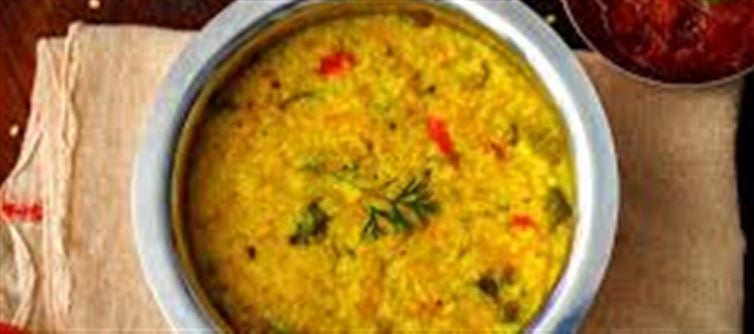
Khichdi is the ultimate comfort food, but if not cooked carefully, it can quickly turn into a mushy, gluey mess. After countless experiments, here are the 7 common mistakes that ruin khichdi and the simple fixes that make it perfect every time.
1 Using the Wrong Rice-to-Lentil Ratio
- The Mistake: Too much rice compared to dal makes khichdi sticky and mushy.
- Fix: Stick to a 1:1 ratio of rice to moong dal for balanced texture.
2 Overwashing or Underwashing Rice
- The Mistake: Washing rice too much removes starch needed to bind the khichdi, while underwashing leaves excess starch, making it sticky.
- Fix: Wash rice 2–3 times until the water is slightly cloudy but not completely clear.
3 Excess Water
- The Mistake: Pouring too much water results in soupy khichdi, even if you like it slightly soft.
- Fix: Follow the 2:1 water-to-rice/dal ratio for a standard consistency; adjust slightly for softer or firmer khichdi.
4 High Heat Cooking
- The Mistake: Cooking on high heat causes rice to break down quickly, leading to mush.
- Fix: Cook on medium heat, and if using a pressure cooker, reduce cooking time after the first whistle.
5 Not Soaking Dal
- The Mistake: Adding dry dal directly increases cooking time and can cause unevenly cooked, mushy grains.
- Fix: Soak moong dal for 20–30 minutes before cooking for even texture and faster cooking.
6 Stirring Too Much
- The Mistake: Constant stirring while cooking breaks grains and makes khichdi sticky.
- Fix: Stir only once or twice during cooking to prevent over-breaking.
7 Skipping the Tempering
- The Mistake: Directly eating plain khichdi can feel bland and mushy.
- Fix: Add a tempering of ghee, cumin seeds, curry leaves, and green chilies after cooking. It adds flavor and slight texture contrast.
Bonus Tip: Add Crunch
- Top khichdi with roasted nuts or papad for an extra crunch, balancing the soft texture perfectly.
Final Bite: Perfect Khichdi Every Time
By avoiding these common mistakes and following simple fixes, you can make khichdi that’s soft yet grainy, comforting yet not gluey, and utterly satisfying for any meal.
Disclaimer:
The views and opinions expressed in this article are those of the author and do not necessarily reflect the official policy or position of any agency, organization, employer, or company. All information provided is for general informational purposes only. While every effort has been made to ensure accuracy, we make no representations or warranties of any kind, express or implied, about the completeness, reliability, or suitability of the information contained herein. Readers are advised to verify facts and seek professional advice where necessary. Any reliance placed on such information is strictly at the reader’s own risk.
.jpg)




 click and follow Indiaherald WhatsApp channel
click and follow Indiaherald WhatsApp channel